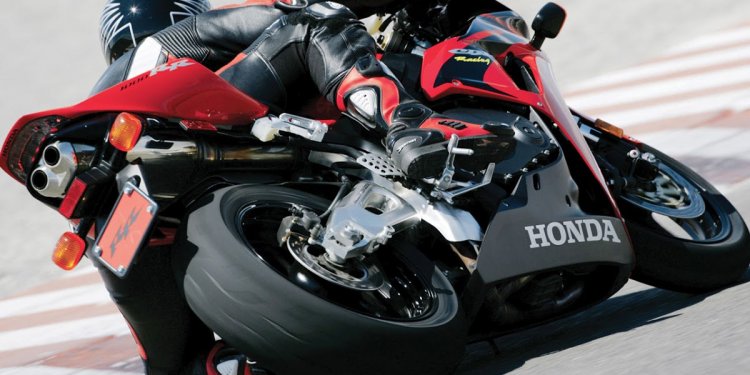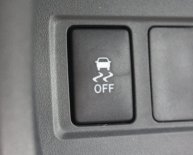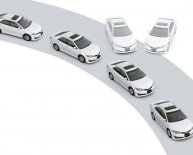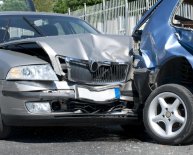
Aftermarket Traction control system
Warning: Please read the notes on our homepage about recent failures in “TCB” lookalike braking units!
How do Traction Control Brakes work? Below is the technical information on how the TCB System work.
What is Traction Control Braking (TCB)?
Traction Control Braking does exactly what it says:
- TRACTION: The tire to ground traction is referred to as coefficients of friction, the TCB device helps to increase the amount of wheel slip during aggressive braking maneuvers by using different amounts of traction.
- CONTROL: During aggressive braking maneuvers or “panic” stops, the area of the tire that is actually on the ground is less than the size of postcard on any given tire, so this small area is where you are getting traction. The TCB allows the tire to rotate during these aggressive maneuvers and the driver experiences more control of the vehicle because more than a small area of the tire’s surface is used. Without any form of Anti-Lock or TCB the wheel is more likely to lock, resulting in skidding out of control.
- BRAKING: Electronic forms of anti-lock braking work only at certain speeds by quickly locking and releasing, but it needs to be emphasized that ABS still lets your wheels lock. When your wheels lock at high speeds or on less than perfect road conditions (such as gravel, wet roads, etc) this can lead to loosing control.
The TCB unit on the other hand works every time you brake and at any speed to help avoid the wheels from locking. Once installed, the TCB becomes an integral part of the brake system it has been applied to.
How does the TCB work?
Normal hydraulic brakes use brake fluid to activate the pistons inside the brake calipers to clamp the outer surfaces of the brake rotor. This clamping effect is normally done without “give”/compressibility, so the harder a rider uses the brakes, the more likely the brake caliper will find a location to lock and seize rotation of the wheel.
Professional drivers use a technique of “modulating”/“feathering” where they release pressure on the brake levers when they feel the wheels starting to lock. The TCB does this modulating/feathering technique automatically by introducing a degree of give/compressibility to the brake system. The give/compressibility factor inside the brake system with the TCB allows a degree of the same type of float and drag effect to help prevent wheel lock.
The TCB introduces the give/compressibility factor to the brake system in the form of an accumulator. This type of accumulator uses a patented design that allows an air over hydraulic technique to dampen high levels of pressure spikes by tuning them into pressure waves. The compressibility factors introduced by the TCB are done by separating a pressure chamber and brake fluid with special elastomer/rubber diaphragm. This allows the dampening effect and gives your brake system the give/compressibility factor to occur without allowing air to mix with the brake fluid.
Since 70% of the driver and vehicle’s weight is transferred to the front during braking you will get the most traction control buy installing the unit on the front. By putting a TCB unit on the rear as well it will increase your braking control. Since there is less weight on the rear wheel the rear wheel will normally locks easier, so by having a TCB unit on the back wheel it will help avoid premature wheel lock. A major benefit by having one on the rear is that it will allow you utilize BOTH the front and back brakes with confidence.
TCB and your Vehicle
- Cruisers and Customs: Cruisers and Customs: The TCB unit is calibrated to function best when applied to each brake caliper for vehicles with more than one caliper per wheel. These heavier vehicles can be more susceptible to wheel lock when you have less traction/coefficients of friction are low such as when road surfaces are wet. Also during turning and braking at the same time, heavier vehicles are more likely to lose control because of the additional weight and inertia.
- Dirt Bikes: Dirt Bikes: Due to the frequent use of the brakes with these types of vehicles, in low turns when you have less traction/coefficients of friction such as soft dirt, mud, or gravel the TCB function is noticed more than ever. More aggressive braking coming into turns becomes a huge advantage in track times.
Advantages in braking after jumps and avoidance maneuvers are also immediately recognized. Downhill braking on lighter vehicles has always been a difficult situation. With the TCB front wheel lock would be less likely to occur to help eliminate flipping the vehicle and sending the driver over the handlebars.
- Sport Bikes: These low center of gravity motorcycles are made to corner at higher speeds compared to any other motor sports vehicle. During these maneuvers the amount of tire on the ground/“footprint” is most important and any wheel lock could end up with less than favorable results. As the TCB helps modulate the fluid pressures additional wheel rotation during aggressive braking is imperative.
- Scooters: In the past few years many new scooters have hit the market, some are now even allowed on highways and freeways. These vehicles have a smaller wheel diameter and subsequently there is less amount of tire on the ground. Therefore any type of wheel lock while turning could be disastrous. Even on the lightest scooter the TCB helps to prevent this out of control condition.
- ATVs: ATVs have a high center of gravity and wide tire(s) so they have more tire area on the ground. This makes the ATV or Quad more susceptible to flipping over on top of the rider especially when riding down a hill. The TCB will help give you more confidence in this situation as well as braking in turns.
Although there are two wheels up front the calipers are smaller and one TCB is sufficient for the front if the unit is mounted at the master cylinder. The rear usually uses one brake caliper for both back wheels; in this situation mounting the TCB at either location is acceptable.
- Snowmobiles: Since snowmobiles don’t have the same characteristics as any of the other power sport vehicles. The area of the track on the ground is quite larger than any tire but the amount of traction/coefficients of friction still remains an important factor in braking and control. Although these coefficients are different, the TCB will still help modulate braking to allow track rotation to occur.
Testing Information
The TCB Brake units are randomly tested per AQL Level 1.5 for pressure and durability requirements set forth by our manufacturing. The units are pressure tested at 4500psi which is well over the pressure requirements of most brake systems components.
In the event that the diaphragm ruptures (the diaphragm is what provides the Traction Control Braking benefits) normal braking resumes and the integrity of the brake systems is not compromised.

















